CURATED EVENTS

Biennale de Dakar 2024
The international exhibition of the 15th Dakar Biennale will revolve around the theme “The Wake, the Awakening, Xàll wi”.
In an immersive journey, carried by an intimate, powerful and serious scenography, visitors will discover the works of 58 artists from Africa and the diaspora. The artistic selection of this edition illustrates the extraordinary African creativity with a diversity of mediums, techniques and artistic universes. From the arts of illustration to virtual reality, including sound arts, sculpture and even photography, the selection process was guided by a commitment to inclusiveness, in a search for balance that transcends boundaries of matter, expression and thought.
More information can be found here.

In the Right Place: Photographs by Barbara Crane, Melissa Shook, and Carol Taback
This exhibition brings together three photographic series made in the 1970s: Barbara Crane’s People of the North Portal (1970–71), Melissa Shook’s Daily Self Portraits (1972–73), and Carol Taback’s Photo-Booth Strips (1978–80). The three photographers worked in different cities—Crane in Chicago, Shook in New York, and Taback in Philadelphia—and may not have ever crossed paths. They also used different cameras and equipment and made radically different choices about who to photograph.
Nevertheless, there is a surprising alignment in their approaches to their work. Each photographer elected to operate under similar self-imposed constraints, creating strict guidelines that dictated where they would photograph. Crane confined her working environment to a single doorway, Shook to her small New York tenement apartment, and Taback to a cramped photo booth. Despite, or perhaps because of, these rigid parameters, each photographer was able to forge an innovative approach to portrait-making, producing pictures that deftly call attention to the complexity of lived experience.
More information can be found here.

Trinh T. Minh-ha: Reassemblage screening
An intricate tapestry of images, voices, and sounds woven and attended to with great care, Trinh T. Minh-ha’s first film Reassemblage appears at a critical juncture in the evolution of what has been traditionally termed ‘ethnographic cinema’. Transposing segments of black screens, field recordings, voiceovers, and filmed observations of post-colonial Senegal—especially scenes of women’s work—in rhythmic sequences, Trinh employs repetition, non-synchronous sound, and forms of disruption to foreground and interrogate the very cinematic techniques that have sustained an anthropological gaze on non-Western cultures and the ways in which documentary films have represented and codified the Other.
Her offscreen declaration at the beginning of the film—’I do not intend to speak about, just speak nearby’—has since become an important methodology for Trinh’s decades-long interrogation on cinematic constructs and on the critical positioning of the filmmaker/spectator.
The screening will be followed by a post-screening talk in English by Elmo Gonzaga, Associate Professor and Director, MA in Intercultural Studies, at the Chinese University of Hong Kong. The talk will be moderated by M+ Curator of Moving Image, Chanel Kong.
More information can be found here.

Christiana Perschon, Double 8 screening
Double 8 focuses on the encounter with Linda Christanell, artist of the feminist avant-garde of the 1970s and opens a projection space. In a decade of departure - following the male-occupied social criticism of Viennese Actionism - artists like her are questioning the social power and gender relations and claiming their place in the art business and the history of art.
In Double 8 the need for interchange with the history of film and its makers becomes tangible: as mutual viewing and being viewed. Two handheld cameras, two spools of double-8 film, four frames: two artists from different generations encounter one another by pointing the camera at each other.
The film format and the cinematic gaze define this encounter by making the protagonists appear on the split screen cascading side by side. In the artistic practice of both actors the focus is on their visual tools, bodywork, image surface, image excerpt, action space in front of and behind the camera, interaction. In the gesture of mutual filming, images are created in the eyes of the others. The gazes into the camera create a visual loop between the two women while at same time pointing at the beholder. These images constitute the two women as self-determined subjects saying: I see you seeing me - instead of being looked at as an object. (Christiana Perschon)
More information can be found here.

El mundo se derrite y nosotros seguimos sin darnos cuenta
Three dancers surrender to the inevitable destiny of ice in a choreography that embodies the symbolic power of the fleeting. Their bodies interact with immense blocks of frozen water in an invented and extreme world that wets, burns, stings and leaves marks on the skin. The scene seems to shipwreck as the performers manipulate the main object, which escapes from their hands and slides down their bodies, melting. The passage of time finds its most complete metaphor in water: it slips away, inexorably, like life.
More information can be found here.
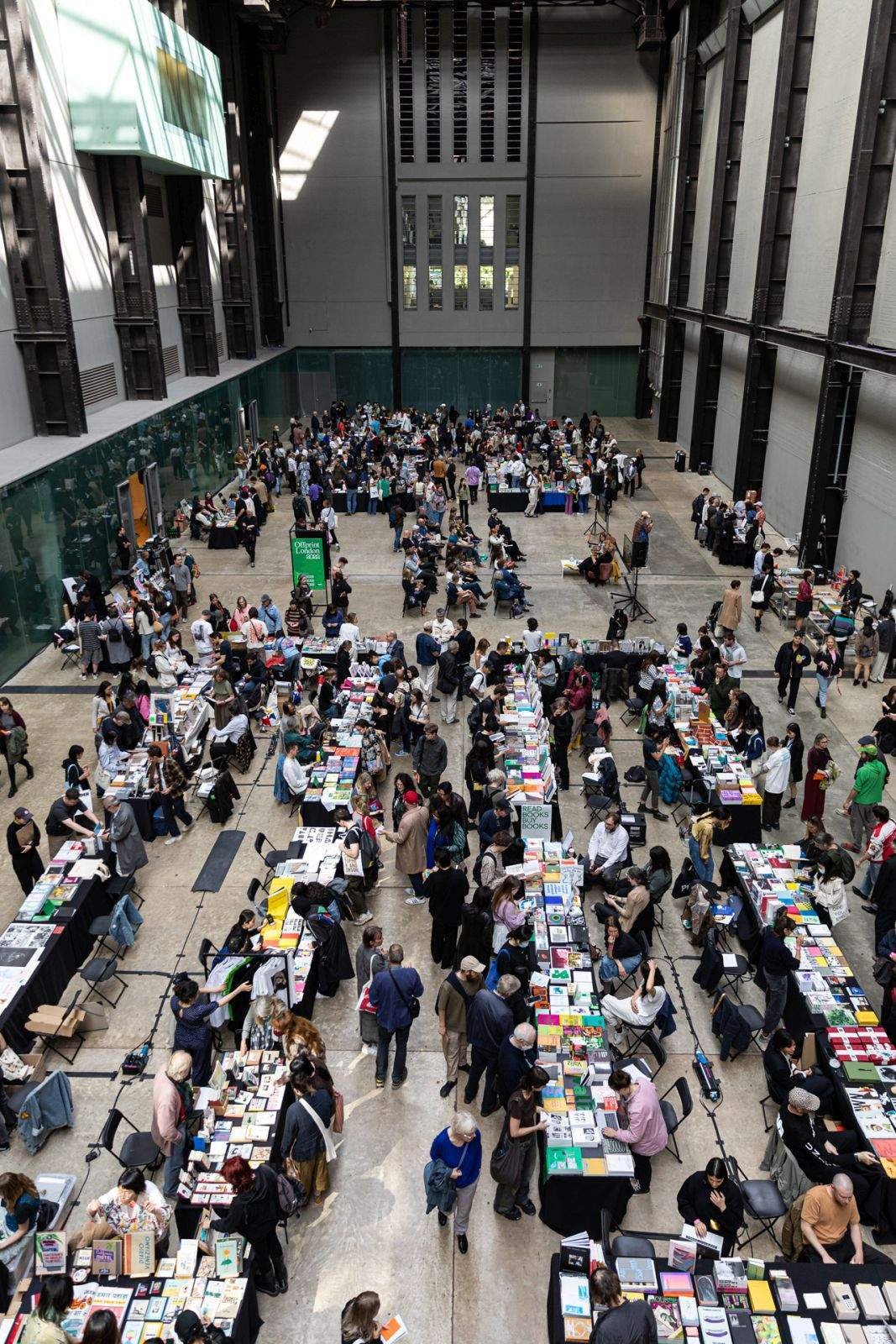
Offprint London 2024
Offprint London returns to the Turbine Hall for its eighth edition. From 17 to 19 May 2024, it will host independent, experimental and socially-engaged publishers in arts, architecture, design, humanities, and visual culture.
Offprint is LUMA Foundation’s platform that supports qualitative and unique publishing practices specific to the arts.
There will be a series of free Tate-led talks between curators, writers and artists over the weekend, taking place in the McAulay Studio, Level 0.
17.05.2024 2 PM - 7 PM
18.05.2024 10 AM - 7 PM
19.05.2024 10 AM - 7 PM
More information can be found here.
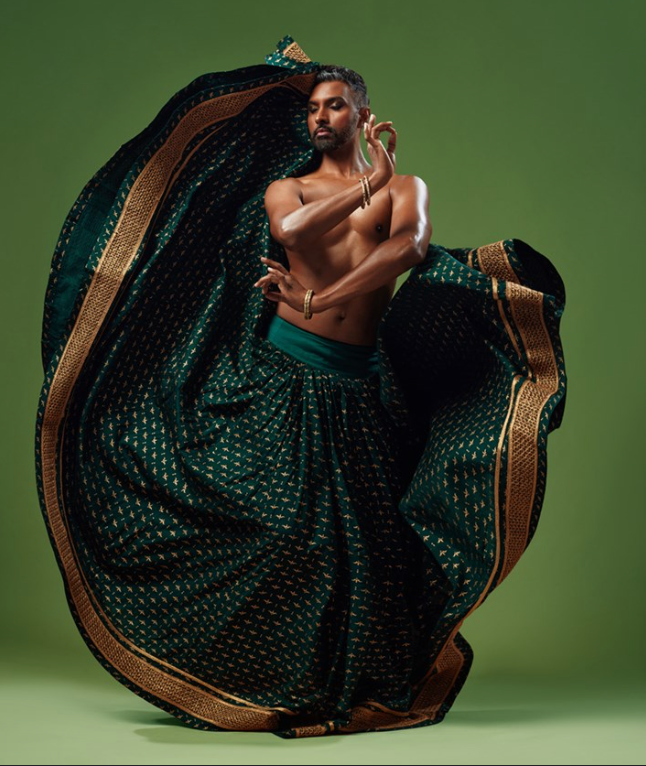
India Dance Festival
During India Dance Festival, we celebrate Indian dance and culture for ten days. Discover the unparalleled richness of Indian dance in lavish performances that are both classical and contemporary.
Since 2011, India Dance Festival has been an unprecedented value in the dance world where traditional styles like Bharatanatyam and Odissi merge with fresh, new interpretations by talented makers. A festival where leading companies and upcoming choreographers from home and abroad meet. We open with the grand spectacle opera Cloud Messenger and present an international hit on the Korzo floor with Fires of Varanasi. Well-known names like Poernima Gobardhan (former maker at Korzo) and Sooraj Subramaniam (dancer with Kalapana Raghuraman and others) will present new work, and there will be a great fringe programme with introductions, workshops and discussions with artists. Keep an eye on our website as we will announce the full programme soon.
More information can be found here.
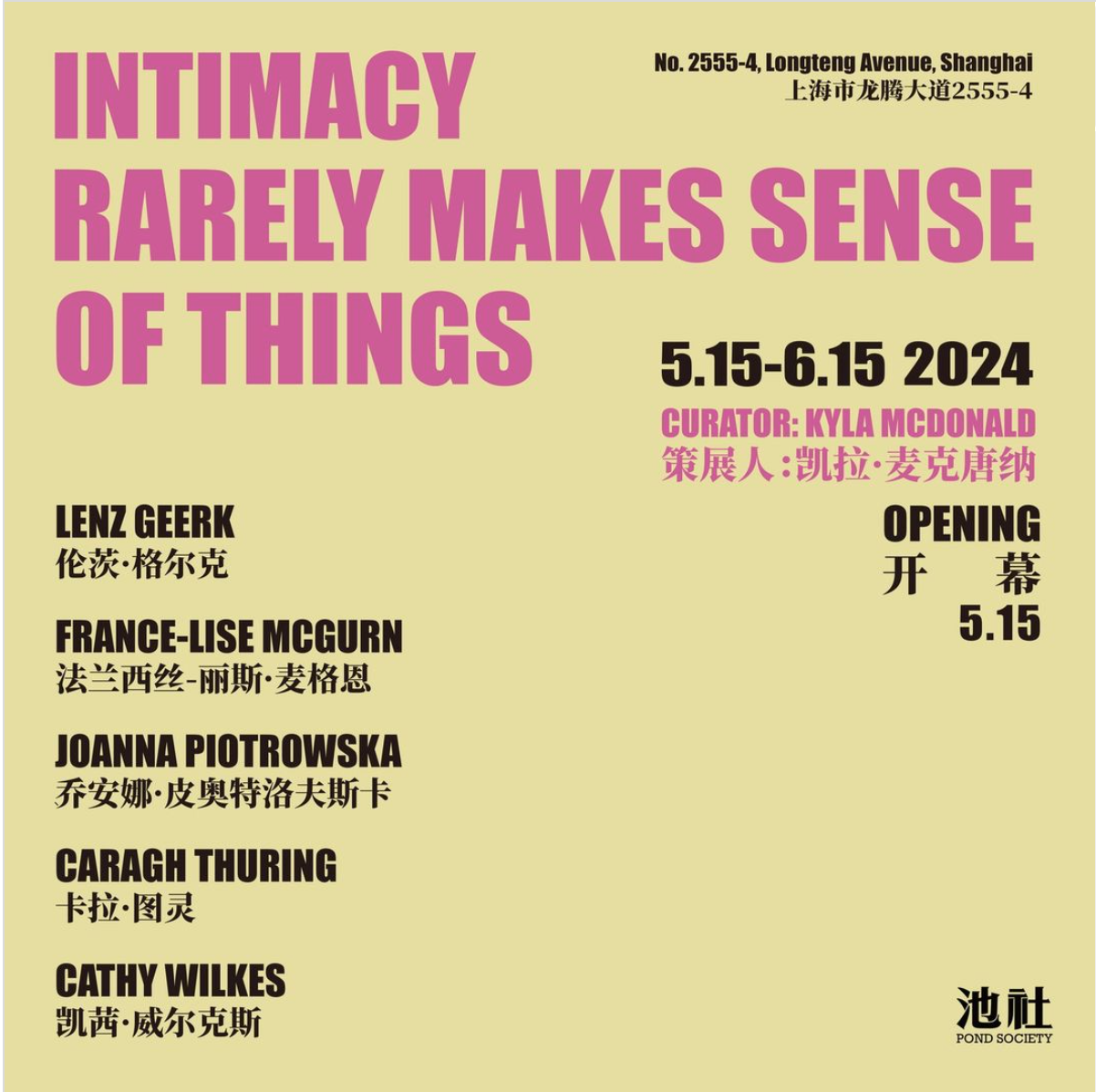
Intimacy Rarely Makes Sense of Things
In cultural theorist Lauren Berlant’s consideration of intimacy, the inwardness of the intimate is “met by a corresponding publicness.” This intersection of private and public is critical to their call for us to rethink intimacy as part of a broader social context, challenging the customary understanding of intimacy being attached to hegemonic ideals of love, desire, and belonging. From conventional perspectives, intimacy is tacit and should remain unproblematic—which, as Berlant argues, can rarely make sense of things that do not fit.
This exhibition brings together five artists whose examinations of intimacy align with Berlant’s perceptions—each demonstrating it to be full of complexity, underscored by ambivalences and vulnerabilities that give space to non-normative perspectives.
More information can be found here.

Lygia Clark Workshop: art and aesthetic experience
A Lygia Clark Workshop: art and experience aesthetics com Ana Carmen Nogueiraaccumulators is a plastic and sensorial experimentation based on the work of Lygia Clark. The activity is part of the Anti-Asylum Month program.
More information can be found here.

Maya Deren, The Witch's Cradle screening
The Witch’s Cradle is an unfinished film by Maya Deren made at the Guggenheim Gallery during a surrealist exhibition entitled "Art of this Century". It was assembled long after Maya Deren's death by employees of the Anthology Film Archives' preservation department.
More information can be found here.

Nancy Holt, Sun Tunnels screening
We at the Tabakalera cinema wanted to schedule two screenings in dialogue with the exhibition Larruak eta izurrak (Skins and Folds) curated by Laura Vallés. To do so, we had various conversations with the curator and, after sharing ideas and views, we developed a programme of two sessions comprised of different artists and filmmakers.
On one had is the first session comprised of two short films. The first is Sun tunnels (1978) from American artist Nancy Holt, who is known above all for her LandArt or sculpture work in public spaces, but also worked with other mediums such as film. “My films, videotapes, and book, also conceived of in a perceptual framework, are usually evocations of landscapes or displacements of places. Indications of space (through tracking, pans, aerial, and walking shots) and aspects of nature—sunlight patterns, billowing dust, water reflections—are caught visually and transported elsewhere via film through time, while the psychology of the place is disclosed through the local voices, sounds, and/or music in the sound tracks, or accompanying text.” (The artist’s statement for Video Data Bank, 1988.)
On the other hand is a piece entitled Core (2022) created by sculptor June Crespo, who participated in the Larruak eta izurrak exhibition, and filmmaker Maddi Barber.
More information can be found here.
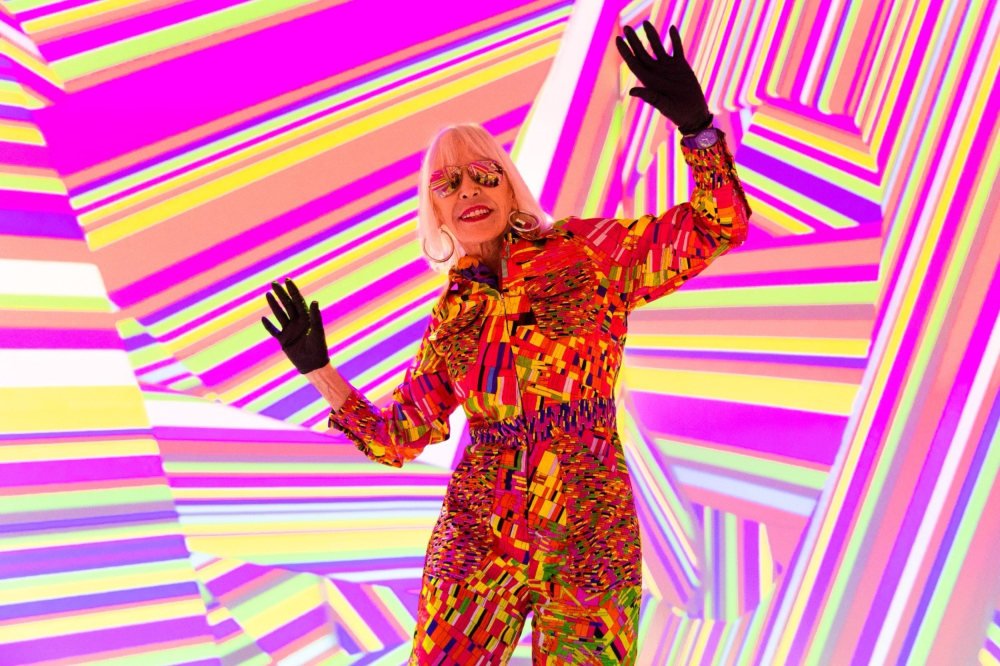
Marta Minujín: making a presence
“Easel painting is dead,” Marta Minujín explained in 1966, “Today man can no longer be satisfied with a static painting hanging on a wall. Life is too dynamic.” This pronouncement on painting’s demise centers a “death v. life” dialectic that propelled Minujín’s artistic experiments throughout the tumultuous 1960s. Her pursuit of a radically dynamic and temporal art that could, in her own words, “register changes that take place minute by minute” turned Minujín into a trailblazer of happenings, performances, participatory environments, and mass media art in her home country of Argentina as well as in France and the U.S.
Such a pioneering trajectory was first set into motion by two bodies of work created before 1965: Minujín’s soft sculptures, known as Los eróticos en Technicolor [The Erotics in Technicolor] and her chthonic paintings and assemblages in an informalist style. Together these discrete chapters of her oeuvre form a tensely intertwined conceptual dyad ruled by opposite forces, Eros and Thanatos, respectively. Their common ground—what they evoke as a site registering changes—was the body. Both series generated radically anthropomorphic artworks while implicating the body of the artist, the viewer, and the body politic, too.
For the first time since 1963, when Minujín’s informalist assemblages shared her Paris studio with Los eróticos, these two series of work have been brought exclusively together, allowing for their dialogue on the vulnerabilities and joys of the embodied condition to unfold. They speak of crises that go well beyond painting’s purported expiration—houselessness, chronic disease, ailing democracy, and the sexual revolution, among others—and that, though proper to the 1960s, resonate with present circumstances. Yet, by virtue of their Janus-faced nature, Minujin’s early works also suggest the possibilities of community, healing, and jubilant defiance before such upheavals and predicaments.
More information can be found here.

"Slow to Act," Idetsu Kyoko
Curator Hosaka Kenjiro says, “Idetsu Kyoko is a mother of two children, ages 10 and 7. The reason why I introduce such a personal information is because such “life” is exuded in her works. For example, in the text accompanying “Midday festival,” she says, “Still, we have children, and we have no choice but to expose our faces to the daylight. It’s not fashionable or anything.
It is the expression of such complex or natural feelings that gives her works a disquieting atmosphere beyond the silliness of children’s drawings….The exhibition was a mixture of fun, nostalgia, sadness, and honest feelings about the future. Please come and experience her world, where various emotions are mingled in a roundabout way.”
More information can be found here.

Condo Mexico City: Aria Dean + Zeinab Saleh
For the 2024 edition of Condo—a collaborative exhibition by 40 galleries across 20 Mexico City spaces—kurimanzutto is glad to host Los Angeles gallery Château Shatto presenting works by Aria Dean and Zeinab Saleh.
Aria Dean’s (b. 1993) multifarious practice employs sculpture, video, and writing to brace a playful and probing dialogue with representational systems. Dean’s inventive sculptural language feasts on the formal and material histories of Minimalism, anti-illusionism, and image piracy. Her most recent, monochromatic compositions are realized by migrating ballistics simulations from virtual space into material form. Each work captures a moment in which a three-dimension composition is subject to torque and compression, representing a durational event through its individual stages of manipulation.
Zeinab Saleh (b. 1996) moves charcoal, chalk, and acrylic across paper and canvas, her gestures oriented towards the affective states of emotion and mood. In Saleh’s work, emotive dispositions are suffused in tone and shade; sonic material refracted through gesture; and observational studies softened into phantasmic forms. Through this consummation of form and concern, Saleh’s works settle as gathering sites for observation, memory and expository rumination.
More information can be found here.
![Memoria: récits d’une autre Histoire [Memoria: accounts of another History]](https://images.squarespace-cdn.com/content/v1/5fff5aabf9f4e55d12aff082/1716505168770-UQHKLGWPO53CO3HT11IJ/65796eadbdc1c2956a10fbc3_Highcompressed_1673506124.jpg)
Memoria: récits d’une autre Histoire [Memoria: accounts of another History]
This exhibition addresses the idea of a collective memory made up of a myriad of stories, accounts, questions and experiences scattered in our individual, personal and intimate memories. This collective memory comes to light in this exhibition in the works of artists that remind us of the reconstruction of a common, universal memory, bringing a new perspective on contemporary creation originating from Africa and its diasporas.
When words and memories are forgotten, destroyed, erased or cut short, there is an urgent need to unveil a counter narrative, to bring multiple histories into coexistence and reveal what has been left unsaid — a need responded to by the 22 artists featured in exhibition, curated by Nadine Hounkpatin and Céline Seror. The defining feature of these works is their desire to transcend the boundaries of art, to “embody the elsewhere” and to illustrate the diversity of our shared individual and, ultimately, collective histories.
Through the multiplicity of techniques (painting, textiles, sculpture, video, performance...), the works presented bear witness to the committed practice of artists, strong in their narrative power and anchored in their fluctuating geographies and in their time. By questioning our thought mechanisms, Memoria : récits d’une autre Histoire [Memoria: accounts of another History] aims to encourage a dialogue on our ability to move away from our point of view, to listen to different narratives and to (re)question what we believe to be the standard, the reference..The exhibition is conceived as a stage made up of proposals in the vast task of building a jointly shaped future where our conscious and unconscious memories would finally be calmed and soothed.
More information can be found here.
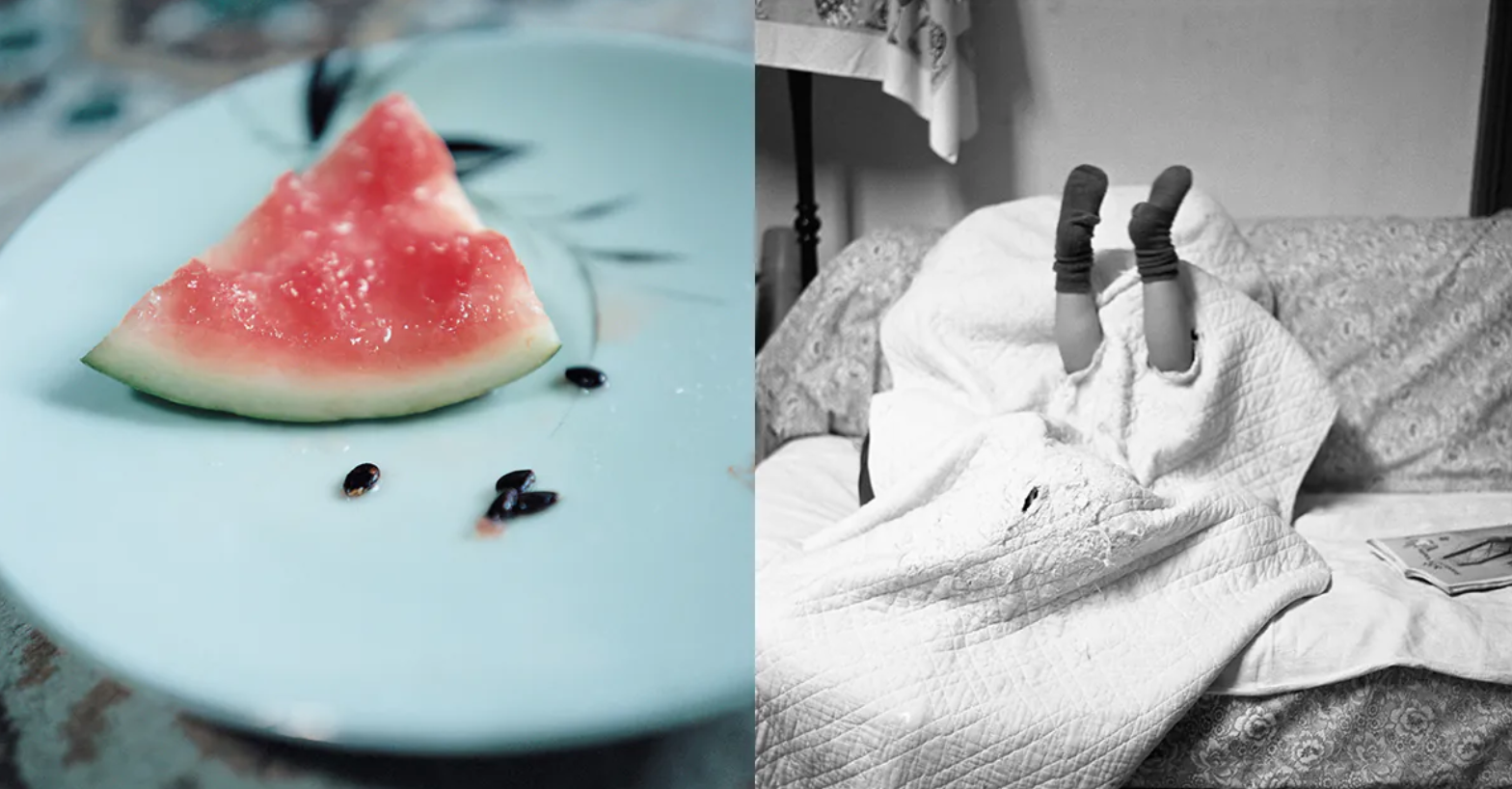
Rinko Kawauchi Cui Cui + as it is|Tokuko Ushioda ICE BOX+My Husband
This exhibition, a dialogue between two female photographers of different generations, is supported by Women In Motion, a Kering program to shine a light on women in the fields of arts and culture. Since 2015, Women In Motion has provided a platform for reflection on the role of women – challenging mindsets and providing opportunities for greater recognition of their contributions in all areas of the arts.
More information can be found here.

Online Event: What Is Poetry to You?
Cecilia Vicuña asks passersby on the streets of Bogotá—including fellow artists and poets, sex workers, children, a police officer, and a scientist—the question: “What is poetry to you?” The surprising answers she elicits reveal the richness of oral culture in Colombia.
More information can be found here.

Performance: Singing to Sculpture: VOID
Throughout the exhibition run of THRESHOLD, 2023–2024 Fellow Allison Halter invites the public to participate in a continuation of the ongoing project Singing to Sculpture. Using group tunings and Deep Listening techniques pioneered by Pauline Oliveros, Halter will encourage a non-verbal sonic exchange with the elements of THRESHOLD, charging them with a variety of sounds and opinions, and providing the participants a chance to express their thoughts and feelings about art outside the confines of language.
More information can be found here.
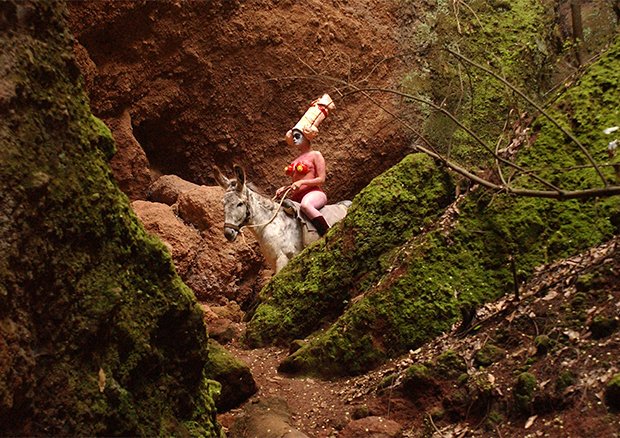
Tracey Rose: Shooting Down Babylon
Originating at Zeitz MOCAA, the Kunstmuseum Bern is mounting the large scale retrospective of South African artist Tracey Rose (b. 1974). The artist has been a radical voice in the international art world since the mid-1990s. Her works engage with post-colonialism, gender, sexuality, racism and apartheid.
At the centre is the power of performance art and the body, which Tracey Rose sees as a place of protest, of rage, of resistance and discourse. Her performances examine and critically comment on central experiences in the transition to a postcolonial world. The artist captures her sensational performance practice in various media such as photography, video, installation and drawing. The retrospective shows works from the period between 1990 and 2021.
More information can be found here.

Dahomey by Mati Diop
November 2021. 26 royal treasures of the Kingdom of Dahomey are about to leave Paris to return to their country of origin, the present-day Republic of Benin. Along with thousands of others, these artefacts were plundered by French colonial troops in 1892. But what attitude to adopt to these ancestors’ homecoming in a country that had to forge ahead in their absence? The debate rages among students at the University of Abomey-Calavi.
Consider how these 26 royal treasures, shorn of their status as artefacts in European museums, have regained their foundational power of incarnation. Consider these men and women, reconnecting with these treasures and with their own political, poetic, and symbolic history. Consider this young African generation, whose committed, critical, and constructive vision we are made to share. All are portrayed through a series of majestic, rigorous, lyrical, and intense shots. With great purpose, Mati Diop captures the precious, fantastical, and yet undeniably real moment in which history is redefined.
More information can be found here.

Artist Talk: LaToya Ruby Frazier
One of the nation’s most acclaimed photographers, LaToya Ruby Frazier reveals the stark reality of today’s America: post-industrial cities riven by poverty, racism, healthcare inequality, and environmental toxicity. By featuring voices and perspectives traditionally erased from the American narrative, Frazier not only captures our cultural blind spots—she teaches us how art is a powerful tool for social transformation. For more than two decades, LaToya Ruby Frazier has used photography and her art to preserve forgotten narratives of labor, gender, and race. Her brilliant, eye-opening work explores the post-industrial era, lifting up marginalized voices and the underrecognized work of women and people of color.
More information can be found here.
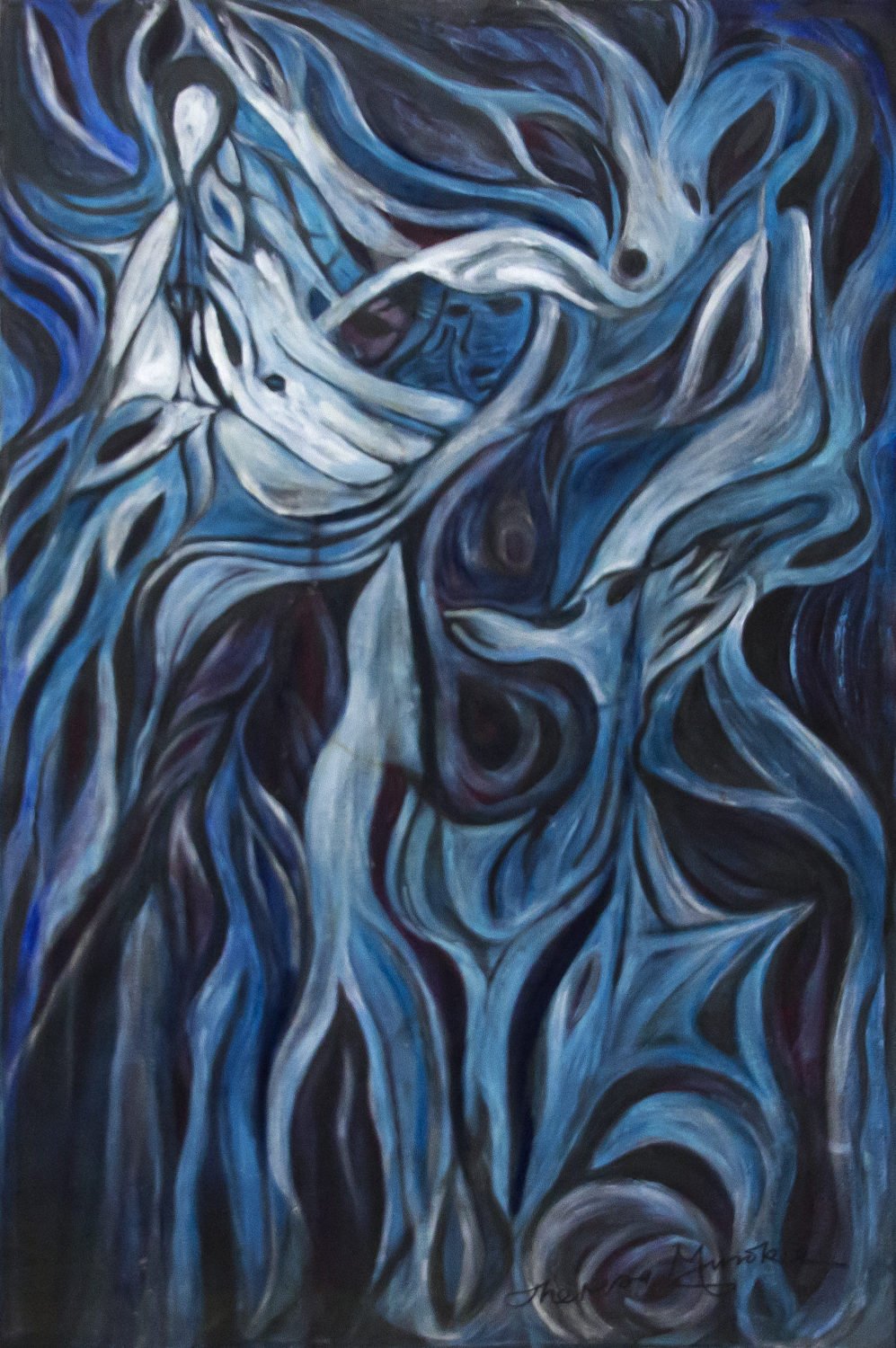
Tracing A Decade: Women Artists Of The 1960S In Africa
Tracing a Decade: Women Artists of the 1960s in Africa focuses on the often-overlooked contributions of women artists during this pivotal decade across the African continent. The symposium illuminates the paths and works of women artists whose practice has been blurred for decades and whose contributions to early postcolonial narratives are yet to be recognized. Guided by a set of key questions, the researchers investigate the identities and stories of women artists from the 1960s, uncover the intricacies of their creative processes, and explore how they navigated the artistic landscape of the changing Africa. Additionally, the symposium examines the thematic concerns and reception of women artists’ work during a time of socio-political transformation.
The 1960s in Africa were a transformational period defined by the triumphs of independence, the complexities of nation-building, and the aspirations for a brighter future. As the continent underwent radical shifts, it laid the groundwork for subsequent decades, shaping the diverse and dynamic Africa we know today. The 1960s served as a crucible for the shaping of postcolonial narratives through the founding and development of several groundbreaking cultural initiatives, including Transition Magazine, founded in Uganda in 1961; the 1962 Conference of African Writers of English Expression, held at Makerere University College in Kampala; the Black Orpheus journal based in Nigeria; and the World Festival of Negro Arts held in Dakar in 1966. Together, these platforms contributed significantly to the intellectual and cultural renaissance of Africa in the 1960s, shaping narratives and fostering a sense of solidarity among black artists and thinkers.
Drawing inspiration from Chika Okeke-Agulu’s insights into the evolution of modern African art history in “The Challenge of the Modern”, the symposium acknowledges the broader context of the 1960s, emphasizing the need to fill a critical gap in the recognition of women artists during this transformative decade. By tracing their paths, understanding their methodologies, and exploring the reception of their work, the symposium aspires to contribute to a more comprehensive and inclusive narrative of African art history. It aligns with Okeke-Agulu’s call for a deeper examination of overlooked precursors, specifically focusing on the women who played integral roles in shaping the artistic landscapes of Africa during the 1960s.
More information can be found here.

A Tribute To Amy Halpern
Amy Halpern (1953-2022) occupies a singular place in the history of American experimental cinema. She was a key figure who took part in many legendary film shoots and artistic projects, a tireless organizer who co-founded or directed several filmmakers’ associations, and, at the same time, an original and prolific filmmaker in her own right, whose works remained, until very recently, in the shadow of her contemporaries.
Born in New York, Halpern devoted herself to contemporary dance from an early age. In the early 1970s, as a student at Binghamton University, she rubbed shoulders with Hollis Frampton, Peter Kubelka, and Paul Sharits, as well as Larry Gottheim and Ken Jacobs who became close friends and collaborators. Later, while studying at UCLA, she worked as a gaffer (a profession she would continue to exercise for years) on the shoots of Charles Burnett and Julie Dash, important figures in the movement of Black American filmmakers known as the “LA Rebellion”. In the second half of the decade, she became close to the Angeleno experimental scene as a programmer and performer. Perceptive viewers will recognize her face in Chick Strand’s Soft Fiction (1979) and, more fleetingly, in Pat O’Neill’s Water and Power (1989).
More information can be found here.
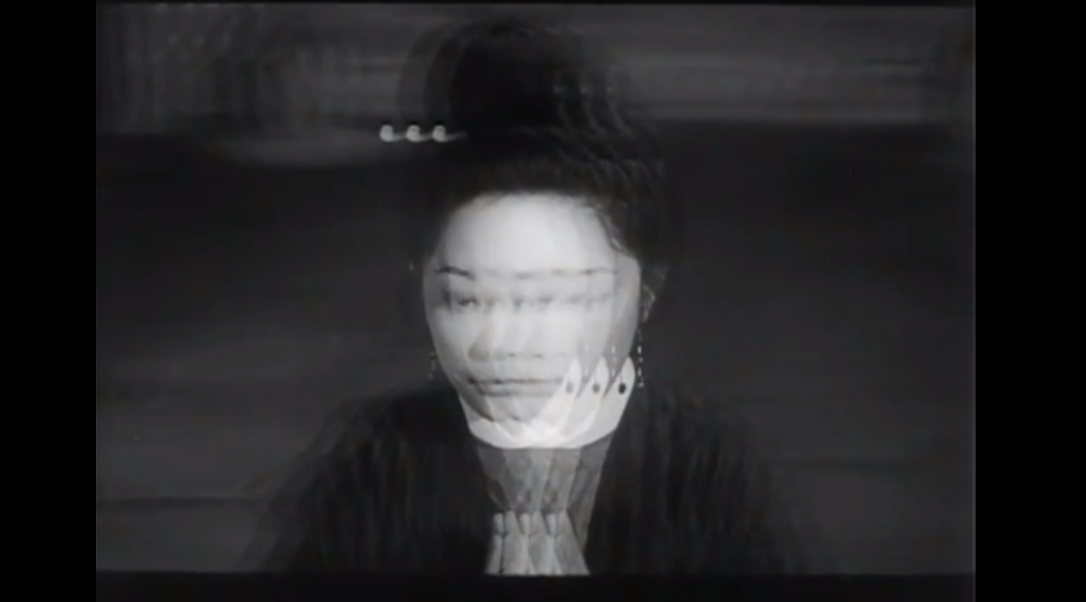
Tang Shu Shuen's: The Arch Screening
Set in 17th-century China, this film is considered the first art film in the Chinese language. The Arch (Dong fu ren) focuses on a wealthy widow (Lisa Lu) in the early Qing dynasty on the eve of her crowning achievement, the erection of a triumphal arch in honor of her many good works. Though her film career was brief, Cecile Tang, (Shu Shuen) was a trailblazer for socially critical art cinema in Hong Kong’s populist film industry, as well as its first noted female director. Shot by Indian director, Satyajit Ray’s regular cinematographer, Subtrata Mitra, and edited by Les Blank.
More information can be found here.

Unravel: The Power and Politics of Textiles in Art
Textiles weave through our everyday lives yet remain one of the most underexamined mediums in art history and contemporary practice. The universality of fabric has made it a potent messenger across global contexts – whether communicating personal stories or conveying hidden messages. Embedded in a single thread is the material history of the medium, revealing ideas relating to gender, labour, value, ecology, ancestral knowledge, and histories of oppression, extraction and trade.
Opening on 13 February 2024, Unravel: The Power and Politics of Textiles in Art will shine a light on artists from the 1960s to today who have explored the transformative and subversive potential of textiles, harnessing the medium to ask charged questions about power: who holds it, and how can it be challenged and reclaimed? Spanning intimate hand-crafted pieces to large-scale sculptural installations, this major exhibition will bring together over 100 artworks by 50 international practitioners. Drawn to the tactile processes of stitching, weaving, braiding, beading and knotting, these artists have embraced fibre and thread to tell stories that challenge power structures, transgress boundaries and reimagine the world around them.
More information can be found here.

CANAN: Vuslat
The title of the exhibition, Vuslat, eloquently captures the essence of reunion, unity, and coming together. Beyond its literal interpretation of reuniting with a loved one, the term unfolds into a rich tapestry of meanings, including the states of reaching freedom, happiness, and a carefree tranquility. Each artwork on display intertwines with these nuanced interpretations, encapsulating diverse desires and aspirations that every being wishes to attain throughout life.
Vuslat reflects an imaginative realm through grand-scale installations and sculptures adorned with fantastical and mythological characters and elements. Among the artworks, Şehretün’nar takes center stage with its captivating visage and narrative, reminiscent of the artist’s earlier sculptures crafted from tulle, fabric, sequins, and beads. Only this time it occupies a distinct position as a more magnificent installation with its size and lighting. In Islamic mythology, Şehretün’nar, a being created from light, is depicted as the mother of jinn. With thousands of faces expressing different emotions, Şehretün’nar unfolds a mesmerizing tale about the formation of nature, the existence of the divine, and the pursuit of life. The tale “Şehretün'nar”, written and performed by the artist, accompanies the artwork as an auditory complement. One of the works that is an inspiration for the exhibition’s title is the calligraphic sculpture, Vuslat. Inspired by the figure of “Burak” in Islamic mythology, this artwork symbolizes a reunion encompassing joy, happiness, and gratitude.
More information can be found here.
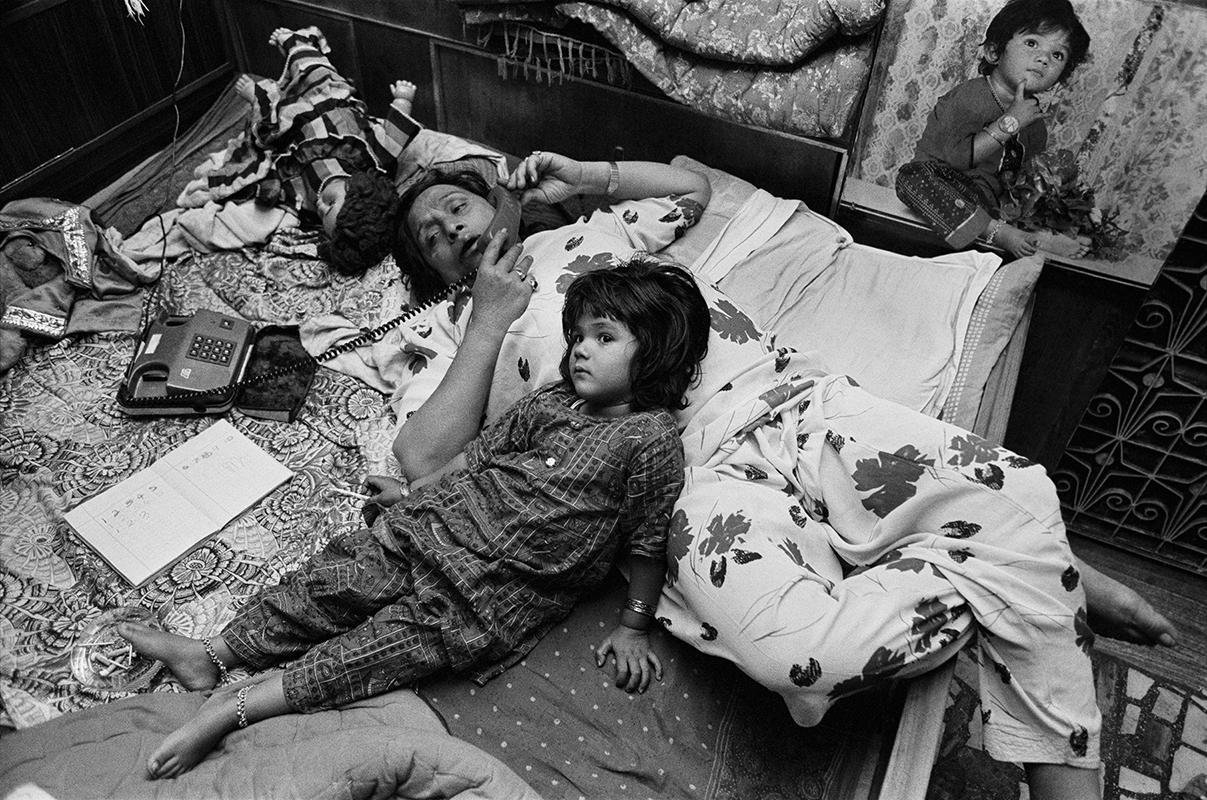
Who is Mona Ahmed ?
The Inaugural Mona Ahmed Lecture Series - Supported by: Dayanita Singh.
This talk offers a reading of the abundant archive Dayanita Singh has made possible of Mona Ahmed. Looking closely at Dayanita’s work and Mona’s words, we learn how Mona complicates what we know of gender, motherhood, and photography. In three small acts - Myself Mona Ahmed, Mona as mother, and Mona, the artist - the talk introduces us to Mona’s freedom dreams, wayward desires, and otherwise possibilities. From her surrender to abjection and her craft of abundance, there is something in her refusal for everyone. This talk is an invitation to her wake.
Free In-person Lecture with live streaming on ZOOM
More information can be found here.

Sarah Maldoror: Tricontinental Cinema
Known as the “mother of African cinema,” Sarah Maldoror (1929–2020) completed nearly four dozen shorts, features, and documentaries in her lifetime. Her 1972 feature Sambizanga was recently restored with support from Martin Scorsese’s The Film Foundation. Tricontinental Cinema is the first large-scale museum exhibition to reveal Maldoror’s groundbreaking work as a filmmaker, but also as a global activist and a champion of Black women’s rights.
This immersive multimedia show, which expands on an original presentation at Palais de Tokyo, Paris, provides an overdue opportunity to celebrate Maldoror’s antiracist, unapologetically irreverent work in film and her involvement with theater, poetry, and politics.
More information can be found here.
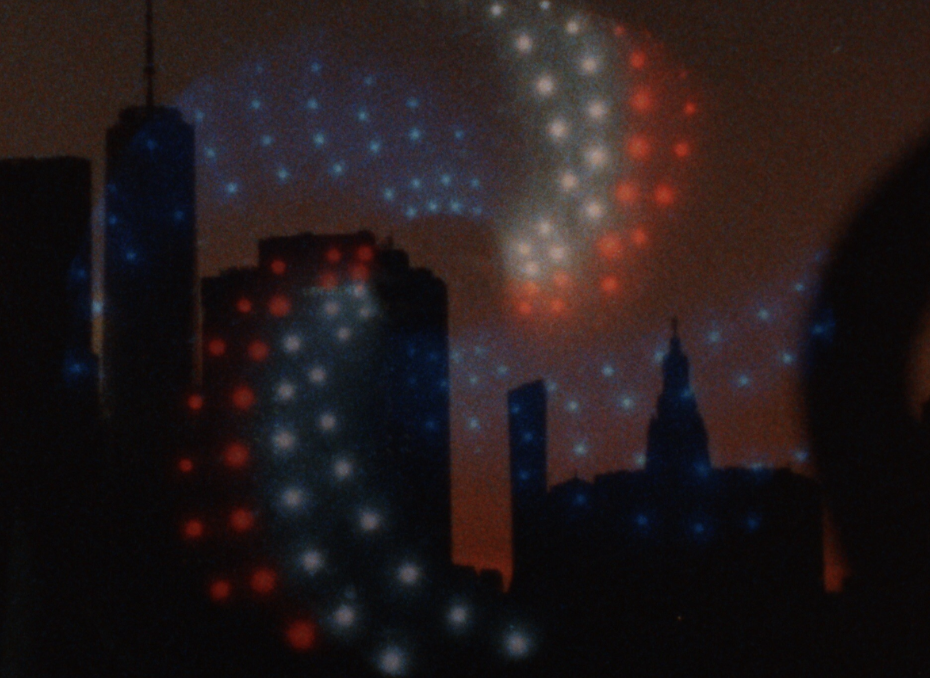
Jenna Bliss / Carol Rhodes
In February 2024, Haus am Waldsee presents parallel exhibitions by the American artist Jenna Bliss (b. 1984) and the Scottish painter Carol Rhodes (1959–2018). The use of temporally or spatially distanced perspectives to reveal new angles on established narratives are characteristic of both artists’ work. By combining everyday observations, speculations, and meticulous research, the two exhibitions form a space in which fact and fiction meet and the larger bearing of structural human intervention becomes tangible.
More information can be found here.

Ruth Van Beek Winter Show
Known for her collage works, Ruth creates her work by reconstructing book and magazine clippings that she routinely collects. The exhibition this time will be centered around her new book, The Oldest Thing. In addition to the pieces showcased at POST @post_books —Tokyo’s esteemed art bookshop—additional works personally selected by Ruth will also be displayed at VAGUE. Moreover, visitors can immerse in ‘POST in VAGUE’, a pop-up space offering art books that crosses genres between art, design, architecture, photography, carefully selected by POST.
To access events prior to May 2023, click here.
